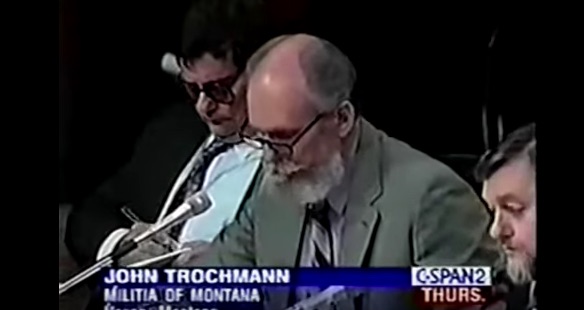I wanted to flag your attention to this article in Vox explaining just why it is that federal authorities do and are taking such a kid gloves approach to the on-going antics of the Bundy clan and associates at that wildlife refuge in Oregon. First, it’s a very detailed interesting read. Second, if you’re over 35, it will remind you that you’re getting old. The piece is clearly written for people for whom Ruby Ridge, Waco, the Oklahoma City bombing and the “militia” heyday of the ’90s is something you learn from history books rather than something you remember watching on CNN.
The gist of the post is that despite the horror of the Oklahoma City bombing and the way it instantly discredited much of the so-called ‘militia’ movement, it actually succeeded in turning a big chunk of the public against the aggressive FBI and ATF tactics employed at Ruby Ridge and Waco. There is some truth to this. It is worth remembering that the Waco incident was certainly not handled perfectly. And when we compare how white militants are handled compared to non-whites, we shouldn’t assume that we should be killing more people camping out in a Wildlife visitors center but that we should have some more consistent policy and simply avoid killing a lot of people where possible.
But what’s left out of the piece, what the piece seems almost oblivious to, is the political trajectory of the early and middle 1990s and specifically the attenuated but real connections between Newt Gingrich’s “Republican Revolution” and what was then the militia movement. Put simply, as they made clear in the lead up to the 1994 election and then in congressional hearings before and after, the more radical wing of the Gingrich GOP was quite solicitous of the militia movement, though certainly not supporting its actual violence – which in any case was mostly threatened rather than carried out.
Most of those militia fellow travelers in elected office went to ground very quickly after the Oklahoma City bombing in April 1995. But even after the bombing, the newly Republican controlled Congress held a series of hearings on the militia movement in which “militia” leaders were brought up to Capitol Hill to preach their claims about federal tyranny and the need for their militias to provide a counterweight to federal tyranny and overreach.
Remember, this is the era when the NRA’s Wayne LaPierre – just a month before the Oklahoma bombing – sent out a fundraising email to 3.5 million NRA member, calling federal law enforcement against “jack-booted government thugs” who “in Clinton’s administration [think] if you have a badge, you have the government’s go-ahead to harass, intimidate, even murder law-abiding citizens.” Even after Oklahoma City, LaPierre defended this inciting rhetoric. This kind of incitement was generating increasing support on the right and indeed has become increasingly normalized over the years.
The relevant point is that you cannot separate the evolution of right-wing militia-inspired violence and its semi-mainstreamed acceptance from the beginning of what we now see as the grand polarization of American politics which had its immediate origins in the early 1990s. Saying that the Oklahoma City bombing helped shift opinion on these earlier incidents completely ignores what were already on-going investigations into both incidents which simply hadn’t run their course and the connection between the militia movement, its actions and the rise of anti-government rhetoric on the right of the Republican Party.






